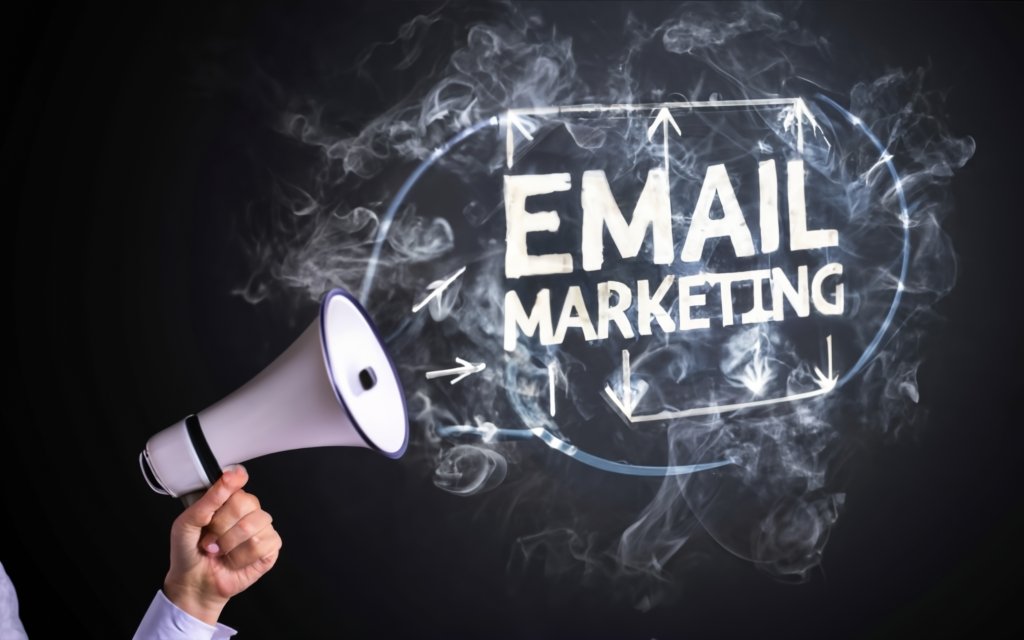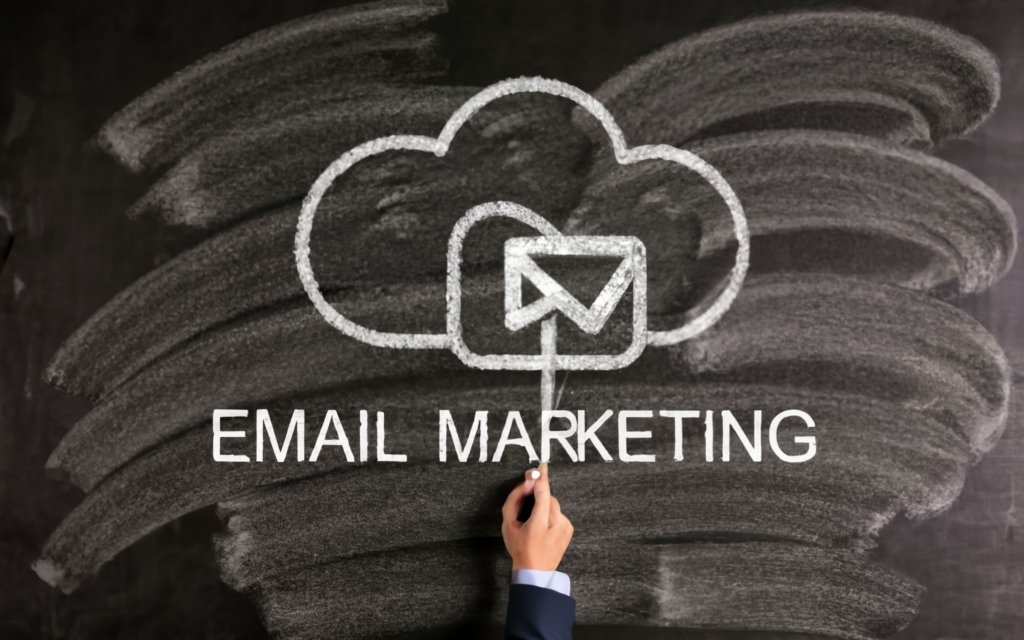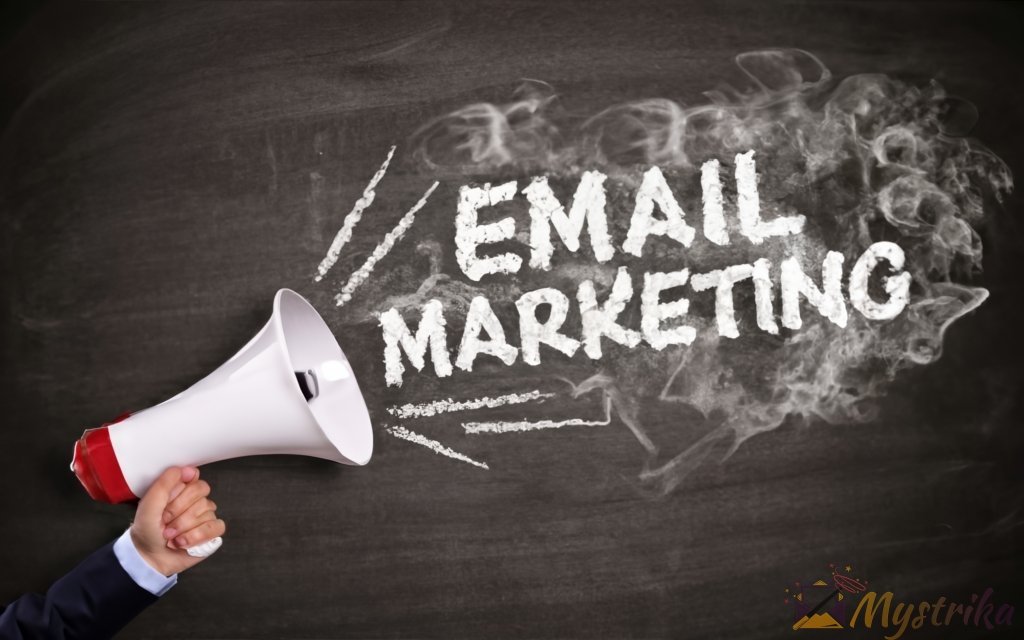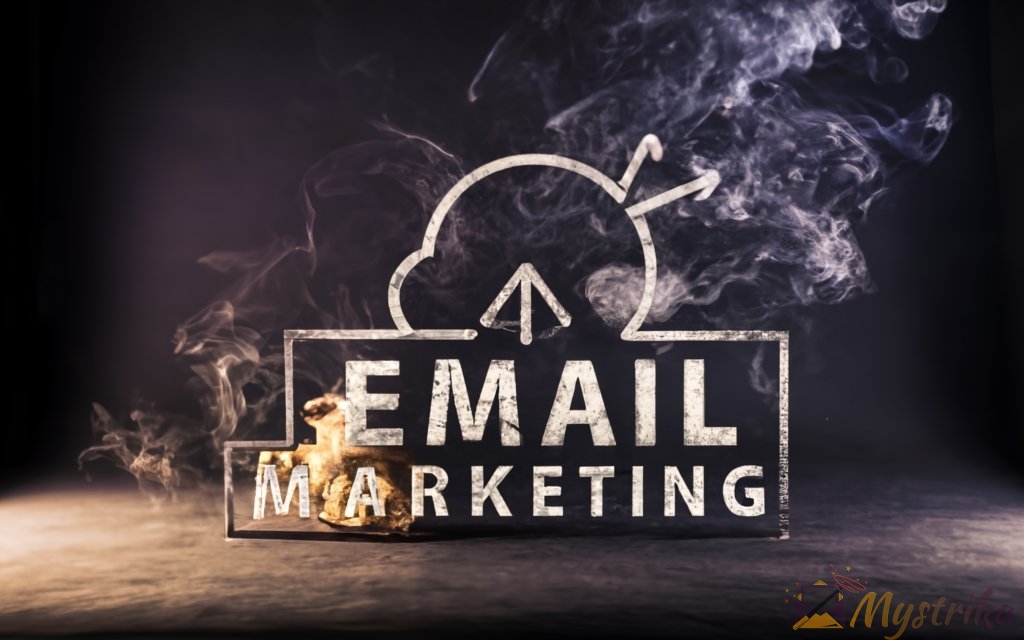Sending emails might seem simple – but creating campaigns that captivate audiences while driving real business growth takes strategy and the right tools. Join us as we dive into the email marketing deep end, uncovering everything you need to reel in more leads and sales with your campaigns! From key features to compare, leading providers, optimization tips, the future of email, and more – this is your definitive guide to selecting an email marketing platform that hooks results in 2023 and beyond.
Why is Email Marketing Still Important in 2023?
Email marketing may feel like an old-school tactic, but don’t be fooled – it’s still one of the most effective ways to reach, engage with, and convert customers in 2023. Here’s why email is still a marketing must-have:
Email Has the Highest ROI Compared to Other Channels
The numbers speak for themselves. Email marketing has a median ROI of 122% according to Campaign Monitor, four times higher than other digital marketing channels. With the average cost per acquisition through email hovering around $20-$30, it delivers an unbeatable bang for your buck. No wonder 92% of marketers say email is their biggest driver of revenue.
Most Consumers Still Prefer Email for Brand Communications
Even with the rise of social media, 91% of customers still want to receive promotional content through email, studies show. Email inboxes continue to be a trusted place for consumers to engage with brands. And with tools allowing more personalization than ever, customers enjoy that marketing emails can be tailored specifically to their needs and interests.
Email Allows Highly Targeted, Personalized Messaging
One of email’s superpowers is the ability to segment contacts and customize messaging. Whether targeting by demographics, purchase history, interests, or behavior – email gives brands the power to speak to different groups in the ways that will resonate best. No more wasting ad dollars on broad audiences. Email lets you engage different customers with tailored offers that feel like they were meant just for them.
With open and click-through rates many multiples higher than social media, and unrivaled ROI compared to other marketing channels, email marketing remains one of the smartest investments a business can make. In 2023 and beyond, email will continue to be one of the most effective ways for brands to build real relationships with customers. No marketing mix is complete without it.

Key Features to Look for in Email Marketing Software
With the wide range of email service providers (ESPs) available today, it can be tricky evaluating the myriad features and determining what’s really essential for your needs. Here are the key capabilities modern email marketing software should have to help brands connect with customers and drive results:
Drag-and-Drop Email Builders for Design Flexibility
Gone are the days of coding HTML emails from scratch or being stuck with a handful of template options. A drag-and-drop email builder gives you creative freedom to easily customize professional, on-brand designs in just minutes. Look for a WYSIWYG editor that lets you:
- Easily rearrange content blocks
- Add/modify text, images, buttons, dividers
- Select from an extensive template library
- Preview on mobile and desktop
- Adjust column widths and styles
- Save templates for reuse
With some ESPs like Mailchimp and Omnisend, you can even have the platform pull images and brand styles directly from your website or social channels to create on-brand templates instantly. The more flexibility and ease of use the builder offers, the faster you can create high-converting, polished emails tailored to your goals.
Contact Management for Organizing Subscriber Data
At its core, email marketing depends on managing a list of contacts. You need tools to not just collect new subscribers, but to segment, organize, and filter your list to target groups effectively. Robust contact management capabilities include:
- Easy import/export of contacts via CSV
- Customizable fields and tags
- Filtering and search to find specific contacts
- Automated data cleansing to remove bad emails
- Segmentation options (more on this next)
- Integration with CRMs like Salesforce, HubSpot, etc.
Look for an email service that centralizes your audience data and makes it easy to sort and utilize. Some ESPs even offer basic CRM features to associate activity timelines and deal stages with each subscriber.
Automation for Triggered, Personalized Emails
This is one of the areas email marketing has advanced leaps and bounds. Automation tools apply rules and triggers to send emails automatically when subscribers take (or don’t take) specified actions. Typical automations include:
- Welcome series when a user joins a list
- Abandoned cart/browse recovery flows
- Re-engagement campaigns for inactive contacts
- Birthday, anniversary, or holiday messages
- Appointment reminders and confirmations
- Workflows based on custom field values/events
The most powerful automations combine triggers from multiple sources like your email campaigns, website activity, purchase history, field values, and more. This allows highly personalized, behavior-based communication.
Segmentation for Targeting Specific Groups
Along with automation, intelligent segmentation takes your marketing to the next level. Group contacts based on profile attributes, purchase activity, engagement metrics, and more. Then target each segment with tailored offers and messaging likely to resonate. Powerful segmentation options include:
- Demographic data like location, age, gender
- Purchase history – total spent, products bought, recency
- Engagement metrics like open & click rates, days since last click
- Custom field values like loyalty program level
- Behavior like attending an event, visiting a web page
- Predictive – likelihood to churn, purchase again
Every email platform handles segmentation differently. Seek out robust grouping options, easy ways to define/update segments, and the ability to tie automations to specific lists.
Analytics for Optimizing Campaigns
How else will you improve your email marketing if you can’t measure what’s working? Make sure your ESP provides comprehensive email analytics and reports covering:
- Overall open, click-through, bounce, and unsubscribe rates
- Rates broken down for different campaigns, lists, templates, etc.
- Click-rate heatmaps showing engagement visually
- List growth and unsubscribe trends over time
- Email client and device data
- Comparisons between segments and campaigns
- Automation success metrics
- Shareable reports that are easy to understand
Ideally, you want a solution that surfaces insights you can quickly turn into optimizations – like re-engaging customers who haven’t opened recently or replacing underperforming templates.
Integrations with Other Software like CRMs
Chances are you use other tools like accounting, ecommerce, marketing automation, and CRM platforms to run your business. Select an email provider that integrates seamlessly with the other solutions you rely on. Common integrations to look for include:
- CRMs (Salesforce, HubSpot, Zoho) for shared contacts/activity
- Ecommerce (Shopify, WooCommerce, Magento) for customer data
- Marketing automation to extend email capabilities
- Analytics (Google, Adobe) to track email KPIs
- Social media for expanded reach
- Forms/surveys like Wufoo to collect subscriber data
- Web conferencing like Zoom, GoToMeeting to promote events
- Plus many more niche-specific tools!
At minimum, you want your primary CRM and ecommerce platforms to sync smoothly with your email service. More integrations let you centralize data from across your martech stack for a unified view of each customer.
For delivering standout email experiences that customers love – while making life easier on your marketing team – be sure to choose an ESP equipped with these core features for designing, organizing, automating, segmenting, analyzing, and integrating your campaigns. With the right tools in place, you can nurture ongoing relationships with subscribers and turn them into loyal brand advocates over time through the power of email.

Comparing the Top Email Service Providers (ESPs)
With dozens of email marketing platforms to choose from, narrowing down the best solution for your needs can feel overwhelming. To help, let’s compare some of the top ESPs side-by-side and explore which excels for different uses cases:
Mystrika with DoYouMail – #1 Cold Email Outreach
The combination of “Mystrika” and “DoYouMail.com” creates a powerhouse for cold email outreach. Here’s why:
- Personalized Outreach: Mystrika offers AI-powered tools for personalized email outreach, while DoYouMail.com provides self-owned email infrastructure for a seamless experience.
- Automated Follow-ups: Mystrika ensures no lead is left behind with automated follow-ups.
- Unlimited Warmup: Mystrika provides unlimited warmup to build your email reputation, and DoYouMail.com enhances this with automated DNS setup.
- Sales Automation: Mystrika streamlines your sales process with sales automation⁵, allowing you to focus more on growing your business.
- SPF, DKIM, and DMARC Setup: DoYouMail.com takes care of SPF, DKIM, and DMARC setup, ensuring a perfect email score.
- Cost Savings: DoYouMail.com offers cost savings on unlimited inboxes, compared to other services charging up to $6-$15 per month per inbox.
- Dedicated IP: DoYouMail.com provides a dedicated IP, ensuring control over your email server reputation.
This combination is designed to supercharge your cold email outreach, helping you achieve higher deliverability rates, enhanced email engagement, and more successful campaigns. It’s a game-changer for any sales warrior! 🚀
Mailchimp – Best for Beginners
With over 15 million users, Mailchimp is the world’s most popular email marketing service. It’s beloved by freelancers, solopreneurs, small business, andpretty much anyone getting started. Reasons Mailchimp rules for email newbies include:
- Generous and fully-featured free plan up to 2,000 contacts
- Intuitive drag-and-drop editor and pre-designed templates
- Easy audience management with tags, groups, and basic segmentation
- Automations for common workflows like welcome series
- Solid analytics covering opens, clicks, unsubscribes, etc.
- Top-notch educational resources in the Mailchimp Academy
- Mobile app for managing campaigns on the go
For beginner email marketers, you really can’t go wrong with Mailchimp. It makes the process very approachable and sets you up for success.
Constant Contact – Best for Small Businesses
Focused squarely on the small business market, Constant Contact packs an impressive variety of features into its affordable packages. Perks for SMBs include:
- Intuitive editor with column/block layouts for responsive designs
- 600+ mobile-optimized templates covering common use cases
- Multi-channel marketing with basic social posting tools
- Event promotion capabilities like RSVP management
- Educational courses included for free
- Excellent spam testing and deliverability rates
- Dynamic content using preferences and merge tags
- Integration with popular SMB tools like Wix, Square, and Weebly
Constant Contact combines ease of use with the capabilities SMBs need at a reasonable price point.
HubSpot – Best for Mid-Market and Enterprise
Known for its comprehensive inbound marketing platform, HubSpot offers a robust email solution with advanced features suited for mid-market and enterprise teams. Benefits include:
- Powerful CRM integration and unified interface
- Intelligent content personalization and A/B testing
- Automated workflows and lead nurturing scenarios
- In-depth analytics and reporting across channels
- High deliverability and inbox placement
- Segmentation by lead score, lifecycle stage, and other CRM data
- Emails, forms, landing pages, ads, chatbots, and more in one platform
- Scales to send millions of emails per month
- Premium email deliverability as an Enterprise customer
With its CRM-centric approach optimized for mid-market and larger businesses, HubSpot is ideal for more advanced email marketers.
SendX – Best for Affordability
Boasting plans starting at just $7.49/month, SendX offers tremendous value without sacrificing great functionality. Key affordability advantages include:
- Drag-and-drop editor and library of responsive templates
- Contact management with tags, groups, and segmentation
- Workflows for automation based on triggers and user actions
- Basic analytics covering opens, clicks, etc.
- Easy signup form embed and popup builder
- Generous free plan with 300 emails/month
- Unlimited emails on low-cost starter paid plan
- Additional contacts/features very reasonably priced
- Free migrations to move from other ESPs
For email marketing capabilities at a budget-friendly cost, SendX can’t be beat in terms of affordability.
Omnisend – Best for Ecommerce
Purpose-built for ecommerce businesses, Omnisend makes it easy to turn customers into repeat buyers. Benefits include:
- Product recommendations and order data in emails
- Powerful automations for browse abandonment and re-engagement
- Customer metrics like average order value and lifetime value
- OpenAPI and ecommerce platform integrations
- Dynamic content based on cart, browse history, etc.
- Superior deliverability with dedicated IPs
- Real-time behavioral segmentation and triggers
- Intuitive workflows and campaign creation
- Generous free plan with basic automations
With deep ecommerce focus, Omnisend gives online retailers the specialized tools they need.
Drip – Best for Marketing Automation
Known for its forward-thinking marketing automation, Drip empowers you to send highly personalized messaging. Key advantages:
- Robust ecommerce data and product recommendations
- Workflows combine email, landing pages, tags, and more
- Send SMS and integrate Facebook Custom Audiences
- Lead scoring and lifecycle stages for automation
- Powerful segmentation and dynamic content
- Great for complex lead nurturing and drip campaigns
- Superior deliverability and inbox placement
- Generous trial and free customer support
- API and Zapier integration
For next-level automation capabilities, Drip has some of the most advanced tools.
ActiveCampaign – Best for CRM Integration
With its built-in CRM, ActiveCampaign unites email marketing, lead management, and sales tools. Benefits include:
- Real-time sync between CRM and email contacts/data
- Track timeline and deal stage per lead
- Segment contacts by deal data and lead score
- Automate emails based on deal milestones
- Site tracking and event-based triggers
- Social media and SMS messaging integrated
- Sales-focused metrics like ROI reporting
- 300+ app integrations with Zapier and more
- Free plan and affordable Pro plan
For integrated CRM and emails, ActiveCampaign streamlines your martech stack.
Moosend – Best for Startups
A great email service for scrappy startups, Moosend makes professional campaigns easy with:
- Drag-and-drop editor and free stock photos
- Automations for common scenarios like onboarding
- Easy signup forms and template personalization
- Solid ecommerce features like cart abandonment
- Basic segmentation by location, purchase, etc.
- Very affordable plans starting at ~$10/month
- Integrates with many startup-friendly platforms
- Generous free plan to get started
- Innovative features like SMS marketing
With lots of value packed in for startups and solopreneurs, Moosend does more with less.
While the best ESP depends on your specific needs, these leading solutions each excel for different scenarios. Evaluate your top priorities – whether it’s affordability, CRM access, design flexibility, ecommerce focus, or marketing automation power – and match with a provider positioned to handle your use case. With the platform that’s the right fit, you can take your email marketing to the next level and keep customers engaged.

Key Factors to Consider When Choosing an ESP
Selecting the right email marketing platform is critical to running effective campaigns long-term. Beyond just features, here are crucial factors to evaluate as you compare ESP options:
Features Needed for Your Goals
Start by making a list of the capabilities that are must-haves to support your email objectives whether it’s complex automations, drag-and-drop design, advanced analytics, etc. Rank these by importance. Look for platforms matching your top priorities first before getting into other factors. No sense evaluating an option lacking your “dealbreaker” features.
Create a side-by-side checklist comparing your needs to features offered. Remember to consider both current and future needs if you’re scaling your marketing. You want a solution flexible enough to grow with you rather than needing to migrate again after outgrowing a basic platform.
Ease of Use and Learning Curve
Even if feature-packed, an ESP does you no good if it’s overly complex to use. Sign up for free trials to test drive the interface and workflow for building campaigns, importing contacts, setting up automations, viewing reports, etc.
Pay attention to:
- How intuitive the UI feels for navigating and accomplishing tasks
- Whether the platform seems logical or makes you hunt around
- How much help documentation you need for getting started
- Any friction points or speed bumps as you use it
Marketing is complicated enough without wrestling your email software. Seek out solutions with modern designs, logical workflows, and UX that make your work easier.
Deliverability Rates and Reputation
It doesn’t matter how beautiful your emails are if they end up in subscribers’ spam folders. One of the top factors to evaluate is an ESP’s sender reputation and deliverability rates.
Watch out for:
- Consistently high inbox placement rates
- Low spam complaints and bounce rates
- Quick resolution if deliverability issues occur
- Dedicated IP options for trusted senders
- Clear best practices to maintain sender score
Established tools like Mailchimp and Constant Contact boast excellent deliverability thanks to years of proven performance and honing best practices. But don’t simply take a company’s word on reputation – verify against impartial third-party data.
Available Support and Training
Even the most intuitive software requires some hand-holding to master fully. See what support options the ESP provides:
- Review access: Phone, email, chat, knowledge base?
- Support hours: Limited or 24/7?
- Initial training and onboarding
- Ongoing education through guides, courses, videos
- Active online community for advice
Evaluate support reviews and talk to the provider directly. Understand the resources available to help you and your team thrive with the platform.
Scalability as Your Needs Grow
Your email marketing needs will evolve. Maybe you’ll outgrow contact limits or want additional automations. Can the solution grow with you?
Scalability factors:
- Easy upgrading to higher-tier plans
- Reasonable pricing for more contacts and features
- Capability to remove limits entirely
- Options for dedicated IPs to send more volume
- Enterprise-grade packages, if you project huge growth
Avoid platforms that lock you in or drastically jump pricing. Seek flexibility.
Integrations with Other Software You Use
Odds are you also rely on tools like analytics, ecommerce, CRM, etc. Using an ESP that integrates and shares data with your other solutions ensures cohesion.
Evaluate potential providers for native integrations with:
- Your ecommerce platform – Shopify, Magento, etc.
- CRM you use – Salesforce, HubSpot, Zoho, etc.
- Marketing automation – Marketo, Eloqua, Pardot
- Analytics – Google, Adobe, Mixpanel, Heap, etc.
- Forms and surveys – Wufoo, Google Forms, etc.
- Ad platforms – Facebook, Google, LinkedIn, etc.
- Web conference – Zoom, GoToMeeting, etc.
- And niche tools specific to your stack!
At minimum, ensure your core platforms exchange data freely. More integrations mean less hassle connecting systems.
Pricing and Long-Term Value
Last but not least, compare costs across options and determine overall value:
- Don’t just look at sticker price – calculate cost per contact
- Factor in associated costs like additional emails or IPs
- Consider free trial or free plan (if your needs are basic)
- Look for discount if paying annually over monthly
- Evaluate rate of support, features, etc. you get for price
- For higher tiers, do extra capabilities justify cost?
- Avoid lock-in contracts if possible
Ideally, you want an affordable provider aligned to your budget that delivers excellent ROI through great support, training, deliverability and more.
By thoroughly evaluating these key factors, you can zero in on an ESP positioned to drive your email success both now, and in the future as your marketing grows. Don’t rush the decision – take time to understand the considerations and tradeoffs to make the smartest match.

Optimizing Your Email Marketing Campaigns
Now that you’ve selected a robust email marketing platform, it’s time to leverage it to create campaigns that captivate subscribers and drive results. Here are tips for optimizing key aspects of your email efforts:
Best Practices for Subject Lines
Your subject line is the first impression recipients get of your message. Follow these best practices to maximize opens:
- Keep subjects concise, under 50 characters
- Tap into emotions like curiosity, urgency, excitement
- Ask questions to trigger interest
- Segment subjects to match audience interests
- Test different subject lines with A/B testing
- Use the recipient’s first name for personalization
- Let results guide you – double down on what works
Well-crafted, compelling subject lines entice subscribers to open and engage.
Tips for Engaging Email Content
Once opened, you want content that holds attention and spurs action. Tactics include:
- Speak directly to readers using “you” language
- Break up text with images, videos, graphics
- Use clear section headers to guide readers
- Share valuable insider tips and exclusive content
- Link to related resources on your site or blog
- Get creative! Add quizzes, contests, user-submitted content
- Feature influencers, industry experts or brand advocates
- Close with a clear CTA stating desired next steps
Keep emails scannable yet compelling, packed with value readers won’t find elsewhere.
Ideal Frequency and Send Times
Don’t barrage subscribers – send thoughtfully timed, relevant content. Best practices include:
- Limit marketing sends to 2-5x/week, 4-8x/month
- Transactional emails like receipts can send as-needed
- Test days/times to identify when your audience is most engaged
- Use timezone targeting to send morning newsletters, etc.
- Monitor engagement to see if you’re over or under sending
- Allow subscribers to set their own preferred frequency
Give readers timely value without overwhelming their inboxes.
Growing and Managing Your Subscriber List
Treat your list like the asset it is. Cultivate it with care:
- Make signup easy through website forms, social, QR codes
- Offer a compelling lead magnet like a discount or content
- Reward existing subscribers for referrals
- Develop engaged micro-communities with segmentation
- Send re-engagement or win-back campaigns to inactive subscribers
- Keep data clean by confirming opt-ins and removing bounces
- Allow list members to manage preferences and unsubscribe
Build relationships with subscribers who genuinely want to hear from you.
Avoiding Spam Filters and Maximizing Deliverability
No one opens emails they never see. Ensure your hard work reaches inboxes through:
- Monitoring and maintaining high sender reputation
- Using confirmed opt-in and managing unsubscribes
- Keeping your list clean from invalid, inactive emails
- Avoiding spam trigger words and inappropriate content
- Using services like 250ok to identify issues
- Warming up new IP addresses gradually before full sends
- Following CAN-SPAM and privacy regulations in your region
Don’t let deliverability headaches undermine your campaigns.
Testing and Iterating for Continual Optimization
Treat email marketing as an ongoing process of refinement.
Ways to optimize:
- A/B test subject lines, content sections, designs, timing
- Track engagement metrics to identify high- and low-performing areas
- Survey subscribers directly for feedback on campaigns
- Monitor unsubscribe and complaint rates for any spikes
- Talk to customer service teams for subscriber questions/complaints
- Build new segments and automations based on learnings
- Keep adjusting based on data until you find the magic recipe!
By constantly testing and optimizing, your email marketing will improve over time. Measure, tweak, repeat – it’s an iterative process.
With thoughtful planning and optimization around engaging subject lines, compelling content, ideal timing, list management, deliverability, testing, and iterating – you can craft email campaigns that resonate with customers and deliver impressive ROI. Master these building blocks, and subscribers will eagerly await your next message landing in their inbox.
The Future of Email Marketing
Far from fading away, email marketing is evolving rapidly and remains a crucial component of digital strategies. Here’s a look at what’s on the horizon for email:
Continued Importance Despite Growth of Other Channels
It’s tempting to believe social media, messaging apps, and other channels might displace email. But the numbers say email is still going strong:
- Email generates 40x the revenue of Facebook and Twitter combined
- Over 4 billion people globally use email today
- Email beats social for acquisition, conversions, and sales
Advances like automation and personalization are expanding what email can do. It’s a channel that’s adapted over decades, not rigid. Email may feel “unsexy” next to new channels, but remains a marketing MVP driving serious results.
Leveraging AI and Automation for More Personalization
AI and marketing automation will supercharge email with more relevance. Picture:
- AI-generated content personalized to each subscriber
- Smart scheduling aligned to individual habits
- Automated trigger emails feel tailored just to the recipient
- Personalized product suggestions based on past purchases
- Segment-of-one messaging through micro-targeting
Email will feel more like texting a friend than bulk messaging thanks to human-like AI.
Email Marketing Software Innovation and Competition
Email providers continue innovating to beat the competition:
- More integrations with CRM, ecommerce, and sales tools
- Multi-channel communication beyond just email
- Dynamic content powered by customer data
- Advanced predictive segmentation and targeting
- Lead engagement across devices and channels
Vendors are racing to help brands provide their subscribers with standout experiences. Email is evolving into specialized marketing automation.
Rising Importance of Deliverability and Inbox Placement
With crowded inboxes, deliverability is make-or-break. Expect providers toGo to extraordinary lengths to guarantee emails land where intended.
- Pre-sending tests for spam triggers, mobile issues, etc.
- Warmup tools to establish new IPs’ sending reputation
- Following emerging inbox placement practices by Gmail, Outlook, etc.
- Limits and best practices to maintain sender score
- Deliverability-optimized design and workflow recommendations
- Deeper analytics identifying engagement drop-offs
Deliverability and inbox placement will increasingly determine the winners.
While new channels grab attention, email continually reinvents itself as a tried-and-true workhorse for marketers. It’s the old reliable in your arsenal, enhanced by cutting-edge automation and AI. Savvy brands will continue doubling down on email as a high-performing channel to engage customers. The next generation of messaging won’t happen overnight – robust email marketing will remain vital for the foreseeable future.

Final Thoughts on Selecting the Right ESP
Finding the ideal email marketing platform for your brand is an important decision that pays dividends through more effective campaigns. To recap key points as you evaluate options:
- Clearly define your must-have features based on email goals, segmentation needs, desired automations, workflows, integrations and other functionality.
- Compare solutions head-to-head and create a checklist of capabilities. Weigh strengths and weaknesses. Try free trials to test drive shortlisted options.
- Look beyond surface features to key factors like deliverability, ease of use, support, and scalability. The right solution meets both current and future needs.
- For growing businesses, emphasize platforms that are intuitive to learn, flexible to scale, and centralize data from other business apps.
- Understand the differences that make certain providers better suited for specific scenarios like ecommerce, CRM integration, design flexibility, affordability, etc.
- Get buyer-beware of bloated enterprise tools with complex pricing if you only need straightforward email capabilities. Don’t overpay for unused features.
- But also avoid underspending on barebones tools that lock you in as your needs mature. Prioritize scalability and headroom vs just starter packs.
- Take time exploring reviews and community feedback. Reach out to vendors directly with questions. Nuances matter in long-term partnerships.
- Weigh costs, capabilities and tradeoffs thoroughly. Don’t rush! An extra day sorting options is a small investment for years of maximizing email results ahead.
The platform you ultimately choose – whether one of the top reviewed providers above or another option – is less important than making an informed decision matching your needs and budget.
With knowledge of the email marketing landscape and factors shaping selection, trust your judgment. There are many great solutions out there – have confidence picking the one that best empowers your brand’s goals for engagement and growth in the years ahead.
You’ve got this! By investing the time upfront to make an optimal data-driven selection aligned to your needs, your email marketing will thrive on the right foundation set from day one.
Summary
If you’re considering an email service provider to step up your marketing game, let’s recap the key points:
- Email remains one of the highest returning channels thanks to targeted personalization and automation – don’t underestimate its power.
- Look for a platform with powerful design, contact management, segmentation, automation, analytics and integrations tailored to your use case.
- Compare top providers head-to-head across must-have features, deliverability, support, ease of use, scalability and cost.
- Understand which solutions excel for specific needs like simplicity (Mailchimp), small business (Constant Contact), mid-market (HubSpot), ecommerce (Omnisend) and more.
- Carefully evaluate key factors beyond just features to make the optimal long-term choice, rather than settling on the first option that meets basic requirements.
- Take time researching and trying leading options for yourself through free trials and demos – don’t rely on reviews alone.
- Look beyond starter packs at scalability, to avoid outgrowing limited platforms requiring repeat migrations.
- Ultimately choose the solution that best empowers your marketing goals, budget and use case for maximizing email results over the long haul.
With knowledge and care selecting the right email provider for you, your marketing efforts will thrive for years to come. Don’t leave it to chance – invest time upfront to make an optimal data-driven selection.
Frequently Asked Questions
Here are answers to some common questions around selecting and using email marketing platforms:
What are the most important features in email marketing software?
Key features include drag-and-drop email builders, contact management, segmentation, automation, analytics, integrations, deliverability optimization, and mobile optimization. Prioritize capabilities aligned to your goals.
What email marketing software do experts recommend?
Leading options recommended for different use cases include Mailchimp (simplicity), Constant Contact (small biz), HubSpot (enterprise), SendX (affordability), Omnisend (ecommerce), Drip (automation), ActiveCampaign (CRM), and Moosend (startups).
How much does email marketing software cost?
Pricing varies greatly but expect ~$10-$30/mo for basic plans up to thousands for enterprise-grade solutions. Many offer free plans for very small lists. Cost depends on contacts, emails sent, and features.
What is the easiest email marketing platform to use?
Mailchimp is renowned for its ease of use, especially for beginners. Constant Contact, SendX, and Moosend also offer simplicity. Compare user experiences through free trials.
How do you choose the right email service provider?
Carefully evaluate features, ease of use, deliverability, support/training, scalability, integrations, and cost. Try demos and read reviews. Ensure it aligns to your needs and budget.
How do you maximize deliverability with email marketing?
Follow best practices like managing sender reputation, confirming opt-ins, enabling domain authentication, warming up new IPs gradually, avoiding triggers, and monitoring engagement.
What are tips for creating effective email marketing campaigns?
Use compelling subject lines, engaging content, thoughtful segmentation and targeting, ideal send frequency/timing, tested designs, automation based on behaviors, re-engagement workflows, and continual optimization.

